How little they differ from animals

How disturbing is the notion of dehumanization as it as attached to a photocentric/audist perspective.
How little they differ from animals

How disturbing is the notion of dehumanization as it as attached to a photocentric/audist perspective.
Moreover, if the assault on the Deaf body was not a severeenough example
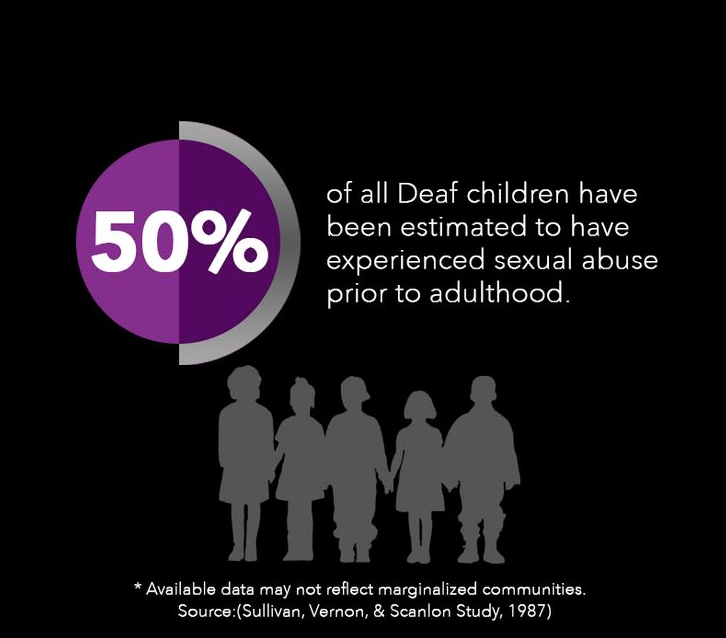
ntarity, and trace. In the Derridean sense, signed languages, ofcourse are forms of writing. But could one be so bold as to say as well, that writing was a form ofSign4—and that gesture is at heart “making meaning through movement.” In this respect, speech isclearly a form of gesture, only we can’t see it, all covered up by the mout
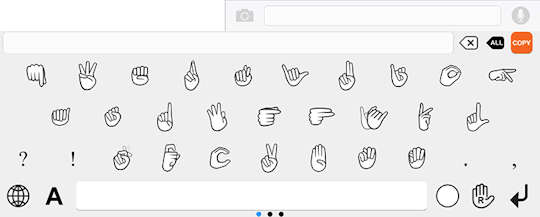
may speak outside the reach

On the horizon is the technology of usingstem cells to implant into the ears of deaf children, making them not like hearing people, butmaking them hearing.

The forces of bio-power are alive and well

developed pedagogies to discipline the deaf bodyinto normative language practices

Users of signlanguage

wandering outcast” of linguistics

Sign Language

Of course, to many in America, being a person of color is synonymous with being poor, and being poor is synonymous with being a criminal. Ironically, this misperception is true even among the poor.
Why is this? Historically, socially? How do we perpetuate it everyday? What can we do about it?
Rather than uniting to face the real foe—do-nothing politicians, legislators, and others in power—we fall into the trap of turning against each other, expending our energy battling our allies instead of our enemies.
Is there any way to change this? What does it say about who holds the power of rhetoric in this country?
If we don’t have a specific agenda—a list of exactly what we want to change and how—we will be gathering over and over again beside the dead bodies of our murdered children, parents, and neighbors.
strong pathos
it’s crucial that those in the wealthiest One Percent keep the poor fractured by distracting them with emotional issues like immigration, abortion and gun control so they never stop to wonder how they got so screwed over for so long.
This is especially relevant with the election going on right now.
Law enforcement’s hyper-surveillance of black and brown youth has created a climate of suspicion of people of color among police departments and within communities. The disrespect and targeting of black men and women by police departments across the nation creates an antagonistic relationship that undermines community trust and inhibits effective policing.
Most likely referring to Markus Gerke's “Want to Help Marginalized Students in Schools? Stop “Stop and Frisk” and Other Punitive Practices, Too.”
Legislation requiring the use of dash and body-worn cameras to record all police interactions.
We see body cameras emerging more now
Federal legislation, currently being developed by Rep. Hank Johnson (D-GA), to halt the transfer of military equipment to local police departments, and additional legislation to curtail the use of such equipment against domestic civilian populations.
This speaks to a much deeper issue as well relating to gun violence and who should and should not obtain these kinds of military equipment / people do not have the proper training or mental capacity in making impromptu decisions in the face of danger
greater attention to the conditions (e.g., joblessness and political disenfranchisement) t
address the roots of the problems in order to move forward, this is the first step
Punitive Practices
Punitive practices are key to the "pushing-out" function that fuels the school-to-prison pipeline. What's at stake here is the way race marks identity in the rhetorical space of school; students of non-white racial identity are exponentially more at-risk of being pushed into the judicial system.
These students receive harsher disciplinary actions and more of them. This also raises the question of how behavior is monitored and policed inside the school system. Another important question is this: How well can hungry students pay attention, learn, and behave, when they are surviving poverty and depending on the support of the schools that are, indeed, pushing them out?
This raises questions of how the body of the student is connected to the ideological model of systemic racism and oppression, which serves to restrict access to literacy and quality education for the marginalized and objectify them through the phenomenon of the school-to-prison pipeline, which is enabled through systemic poverty and policy responses to problems in the educational system which are not being adequately addressed on a global level.
“Stealing a Bag of Potato Chips and Other Crimes of Resistance.”
Exploring the rhetoric of defiance in a society of oppression
public statement
Written by 1800+ sociologists who identify the roots of the problems and suggests eight appropriate responses to Mike Brown's death
Jones and LeBaron p.512: "Mutual influence is especially complex and subtle in face- to-face situations because visible forms of communication occur simultaneously with one another and with vocal messages, and exchanges among persons can occur both sequentially and instantaneously."
Simultaneous
 Sequential
Sequential

Jones and LeBaron p. 506: Schegloff rightly argued that “per minute” calculations are an inadequate basis upon which to evaluate sociability and suggested that behaviors be counted according to whether they occur in “environments of possible relevant occur- rence” (p. 103)—that is, places where such behaviors would be appropriate in an interaction.

Jones and LeBaron p. 503: "A major current trend is to emphasize mutual or co-active influences. Although it is still common, among quantitative studies, for verbal and nonverbal behaviors to be coded as separate messages assumed to have distinct meanings, some researchers are attending to the interplay of messages between interactants, rather than merely the behaviors of one person in an interaction. Somewhat con- trived situations are often used in such studies, but the new emphasis on mutual influence contrasts with the traditional experimental approach in which a confed- erate performs certain planned behaviors in order to see the effects on the other person(s)."

Jones and LeBaron p. 502: "For instance, he observed that if a speaker held a gesture in midair while pausing, no change in speakership would occur, even when various relinquishing behaviors were exhib- ited—the “turn-suppressing” gesture in effect canceling out the meaning or effect of the other behaviors."

Jones and LeBaron p. 502: "The implicit assumption was that frequent behaviors were more important in achieving closure to the conversation."

Jones and LeBaron p. 500: "certain facial expressions are universal"

The full rhetorical impact of the student's composition cannot emerge without the song, which functions metaphorically and ironically to forward the author's main point.
The ability of music to change the interpretation of what is portrayed visually
Then, Karen (JoBeth Williams) goes to the church organ to play an instrumental version of Alex's favorite song: The Rolling Stones’ 1969 release, “You Can’t Always Get What You Want” (Jagger and Richards, 1968 and Jagger and Richards, 1969).
“You Can’t Always Get What You Want”
But, we can also think of the song itself as a symbolic object
This title could be the epitaph on Alex's tombstone; instead, it is the thesis for Kasdan's film.
I certainly encourage students and instructors to develop collaborative relationships with musical composers and/or to experiment with computer programs such as Apple's GarageBand in order to develop integrated-media compositions with “original” musical soundtracks.
We may hear two characters talking in a crowded restaurant but not hear any other noise that would surely be there, for example, other restaurant patrons, background Muzak, or wait-staff explaining the daily specials. The filmmaker selects, interprets, and focuses what we hear just as carefully as she, or in the case of most Hollywood films he, selects what we will see and how we will see it.
musical rhetoric may enable us to hear new possibilities
listening
the disembodiment of the voice
Recording as disembodied—sounds like the issue of embodiment and writing.
But in fact, white supremacy provided the fuel for many early commercial phonographic recordings, including not only ethnic humor and “coon songs” but a form of “descriptive specialty”—the period name for spoken-word recordings about news events and slices of life—that reenacted the lynchings of black men
This is a disturbing fact about the connections between the commercial and systemic racism.
World Listening Day is a time to think about the impacts we have on our auditory environments and, in turn, their effects on us.
This is definitely something I've thought about in general—the sound of spaces and the way those sounds affect my experience of the space—and also, it's interesting to think about how I impact on my "auditory environment."
That is, hearing without listening is response without responsibility; it is a form of pseudodialogue without ethics.
This seems to be a key facet of the argument being made for listening as ethical—by critiquing Gadamer's omission of the difference between hearing and listening, pointing to the role of intention/focus and agency which points to unfocused hearing as "without ethics."
p.236 para1
oral and literary
It's very interesting to see this argument take up the issue of the oral/literate binary—looking at the binary through the eyes of literacy studies, a privilege of print literacy has been a way that the other has been subjugated in different historical contexts.
p.234
This idea of a polymodal “face that speaks” introduces an interesting con-tradiction that Levinas himself addresses in 1951 when he asks, “How is the vision of the face no longer vision, but hearing and speech?” (1987, 11). That is, how can the face, a visual phenomenon in which seeing is the primary experience, manifest not in sight but in hearing?
p.232
We often say, "I see what you're saying," or "I feel that." It's this kind of "polymodality" wherein the modes are remixed in our commonplace language
alterity
otherness—the state of being different
hypocrisy concealed by an original source or to argue for an alternative view
Pop culture and contemporary political media may seem freely available for subversive remixing into new digital compositions
who repurpose the foundations of history are less easily forgiven.
Fruit Punch
“text”
“intrusion of sorts, resenting and even actively rebelling against what they may experience as the ‘imposition’ of race, class, gender, sexuality, or (more generally) cultural issues on their ‘neutral’ course of study” (2003, p. 117, her emphasis). Student resistance to feelings of “intrusion” has much to do with how they engage with the politically charged materials; how they “attribute identity or intention to a writer in order to understand or account for a text” ( Haas, 1993, p. 23)
interruptions can change courses (ignore the tweet)
This essay brings the longer pedagogical concern for engagement with texts into the multimodal composing context, shifting the emphasis of affordance to how different modes and mediums also afford certain kinds of engagement in the process of composing. This shift returns to the origins of “affordance,” coined in 1979 by ecological psychologist James Gibson. Above all, Gibson was concerned with perception—with what guided our attention to some environmental aspects over others and how this sensory reception of an environment “afforded” different behaviors.
http://www.radiolab.org/story/91512-musical-language/ The first section
When digital scholars attend to the affordance of a mode or a medium, they tend to emphasize what kinds of composing its constraints help produce, such as the “particular affordances of sound” to “convey accent, emotion, music, [and] ambient sounds” (Takayoshi & Selfe, 2007, p. 9) or the “affordances of a digitally connected, networked environment” to “enable combinations of sounds, images, motions, and words” (Adsanatham, Garrett, & Matzke, 2013, p. 317).
The diagrams reinforce the very anthropocentrism I’m seeking to resist. To address this concern, I’ve begun playing with other kinds of visualizations including the network graphs below.
Considering the idea of object-oriented ontology, the network graphs complicate the idea of anthropocentric agency, in a way decentering the human subject, realizing human agency as interconnected or braided into a wider ecological agency of objects.

triptych
noun a picture or relief carving on three panels, typically hinged together side by side and used as an altarpiece. a set of three associated artistic, literary, or musical works intended to be appreciated together.
via google
As human dramas increase, mentions of flora generally decrease.
How might this notion be reflected in the acceleration of industry in late capitalist society?

trace major connections among living beings and patterns across texts
The idea of these major connections brings up the notion of agency as relational.
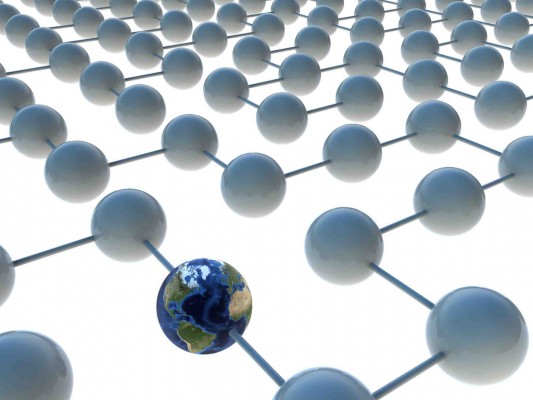
leaf

Many different kinds of representations of "leaf" can signify different rhetorical implications.
the intellectual work that goes into designing a markup schema is integral to the success of addressing the research questions.
Methodology

Webb characterizes Hazel’s suitors as “Reddin the destroyer” and “Edward the savior” (final page of novel)—a description that also maps onto Tess where Alec is the destroyer and Angel the savior. And yet both Angel and Edward are failed saviours: in each novel neither the protagonist nor her child survives. The similarities in the plots and themes of the two novels make them ideal for comparison.
Here, the idea of consonances comes up again.

To be too close is to lose sight of the larger systems in which we are imbricated. To be too distant is to remain outside, to see patterns without acknowledging one’s complicity within those systems.
Again, speaking to relationship on an ideological level.
consonances
In this case, harmony or interrelation, to borrow from musical consonance.
corporeal
relating to the body
We are perhaps most familiar with “black box” technologies that separate user from code and mystify the processes through which new knowledge creation is facilitated.
The ideological implications of mystification

Technology is often characterized in opposition to the natural world (and sometimes with good reason). But it is clear from Macfarlane’s account of his own research that digital technology has not displaced the language of the natural world—it has recorded, transmitted, publicized, and preserved it.

“Now I know the word ‘smeuse,’” Macfarlane writes, “I notice these signs of creaturely commute more often.”
Linking ecology and language

He cites the Oxford Junior Dictionary’s contentious decision to “cull” many “nature words” (Macfarlane n.p.) from its list, removing words like “adder, ash, beech, hazel, and willow” and replacing them with “attachment, blog, broadband, and chatroom.”
Could we collectively consider all words about a particular subject field as a "hyperobject"?

This is very much a work-in-progress talk, and I welcome feedback, questions, suggestions, and collaborations!

The idea that the scholar is open to collaboration suggests a reflective approach to composition that is not established in a hierarchical form of discourse.
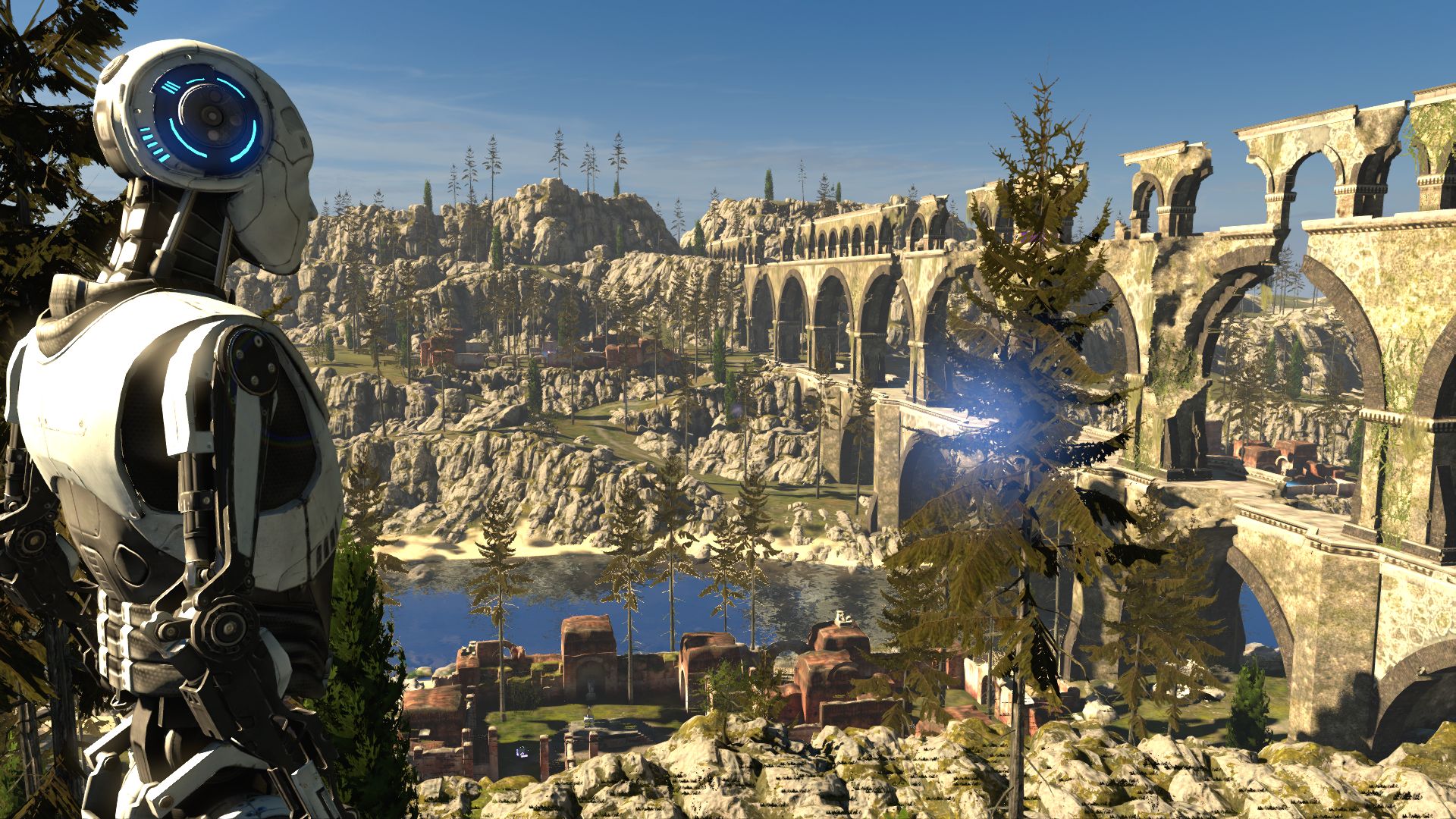 self edifying principles
self edifying principles
 approachably disruptive
approachably disruptive
 wonder what Humphrey would think of Unflattening
wonder what Humphrey would think of Unflattening
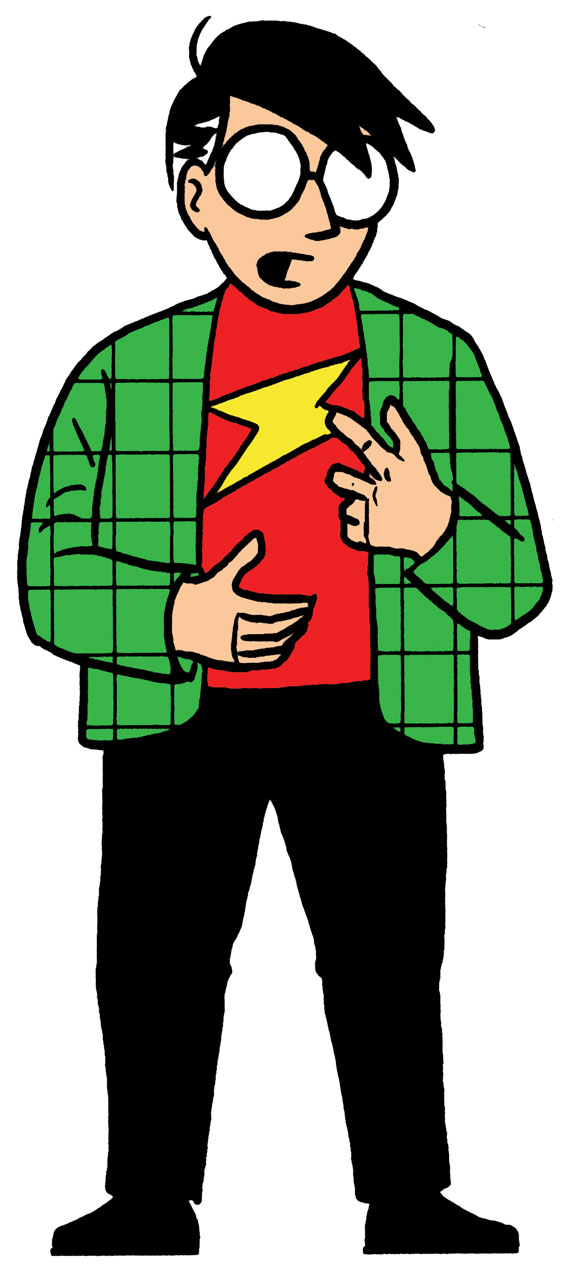 also smells of McCloud
also smells of McCloud
wrote and drew his dissertation entirely in comic book form
like Humphrey. A way to expand academic argument to broader audience, challenges academia, "bridge between public and academic discourse"
into teaching, learning and creativity
Ability to communicate complex ideas through nontraditional discourse via multiple tools such as varying modes, layers, open space, etc.
Relates to Bogost- society is complex ideas and the need to interact with those, and Humphrey-"spatio-topia" and challenge to authority through language and presentation
 color as indentification
color as indentification
 mindfulness
mindfulness
Rius' "iconoclastic" avoidance of the globalizing features of digital composition raise interesting concerns about the affordances of pen and paper and also about how the visual and spatial can mix with the linguistic and create a unique synergetic effect: http://danieltlamb.tumblr.com/post/141489115893/synergy-by-masterdiwo-via-flickr-this-is. The combination of modes by which meaning is located functions in a fluid kind of way—http://danieltlamb.tumblr.com/post/141489175838/fluidity-by-robertojeda-via-flickr-fine. For Humphrey, comics have a special rhetorical power for reclaiming the power of underprivileged modes, moving away from the hegemony http://danieltlamb.tumblr.com/post/141489327288/hegemony-by-gaiastreetart-via-flickr of print literacy.
As archives proliferate digitally, so do occasions for manipulating and modifying their contents—and, in the process—for engaging with voices of difference in the writing classroom.
http://danieltlamb.tumblr.com/post/141488147953/img4090-copy-by-sue-davis-via-flickr
use, remix, and repurpose
http://danieltlamb.tumblr.com/post/141488033683/escher-by-matt-smith-via-flickr-there-are
body
http://danieltlamb.tumblr.com/post/141487799763/oppression-by-christine-mercier
using “communication technologies in the interrogation of such constructions” ( Alexander & Banks, 2004, p. 273). The incongruity in the archive can help encourage more complex, multifaceted understandings of identity.
http://danieltlamb.tumblr.com/post/141487540573/nongendered-toilet-sign-2-electronic-frontier
productive uncertainty and sensations of contradiction
http://danieltlamb.tumblr.com/post/141487430388/my-studio11-by-aniuszka
incongruous and even contradictory elements
http://danieltlamb.tumblr.com/post/141487269713/paradox-by-ben-may
archive of historical material
gender-critical self-reflection
most alarming
homophobic
http://danieltlamb.tumblr.com/post/141486778783/homophobia-by-mike-fleming-via-flickr
If two women were walking down the street holding hands/Would they be mistaken for sisters, relatives, best friends?
http://danieltlamb.tumblr.com/post/141483913163/lesbian-teen-angst-by-ericka-black
she began to notice that women's voices were few and far between
http://danieltlamb.tumblr.com/post/141483739848/day-289365-by-shehan-peruma-via-flickr
Despite their resistance to feminism earlier in the semester, many students elected a gender-critical approach in charting their line of inquiry through the archive.
this increased desire to keep working is particularly pointed in audio composing because of the kind of listening it demands:As our students have discovered, listening to recordings.. inspires a self-conscious perspective (a form of analytical listening) on what's being said, how it is being said, who is saying it, and to whom. Along with this self-consciousness comes the impetus to revise and revise again in order to achieve resonance (or dissonance) with an audience. (n.p.)7
http://danieltlamb.tumblr.com/post/141483525478/open-your-mind-01-by-mejor-y-mejor
But, while parodic remix is an effective and popular form of argumentation, it does not afford a stance of openness when engaging with the existing media—quite the opposite, in fact, since these remix practices often intentionally undermine the original source.
http://danieltlamb.tumblr.com/post/141480971193/never-close-your-mindexplored-by-mario
In these two examples, moments of awareness that the students’ lives might require the negotiation of gendered power imbalances—this was productive uncertainty—were quickly closed down and abandoned.
http://danieltlamb.tumblr.com/post/141457875043/gender-power-by-the-guardian-on-flickr-via
most students tended to reduce and silence the blogger to justify their resistance to feminism in their informal responses to the reading
gender-themed first-year writing course
http://danieltlamb.tumblr.com/post/141457395438/patriarchal-education-2014-by-christopher
gay liberation radio shows
http://danieltlamb.tumblr.com/post/141457282333/gay-liberation-monument-in-ny-by-kastor-o
Listening's dual meaning of understanding and hearing suggests that audio composing can be harnessed in affording a stance of openness to difference.
http://danieltlamb.tumblr.com/post/141456600678/poverty-by-saird
engagement is fundamentally guided by social relations of difference: “we pay closest attention to the optical and acoustic information that specifies what the other person is, invites, threatens, and does,” before acting accordingly (1979, p. 128). Paying attention to how students engage with sources before and during multimodal composing means shifting our understanding of affordance back to Gibson and back to difference.
challenge
an imagined user
http://danieltlamb.tumblr.com/post/141455651088/power-feline-user-by-dan-dickinson-via
listening
http://danieltlamb.tumblr.com/post/141455158803/listen-by-devlin-ralph-via-flickr-accessed
particular affordances of sound”
http://danieltlamb.tumblr.com/post/141455391783/great-acoustics-by-willemijn-van-gastel-via
openness
(http://danieltlamb.tumblr.com/post/141454795363/eedr2016-meditation-by-moyan-brenn)
pp. 8

Source: https://louishenderson.files.wordpress.com/2010/10/not_a_pipe3_neg_30cm.jpg
pp. 14
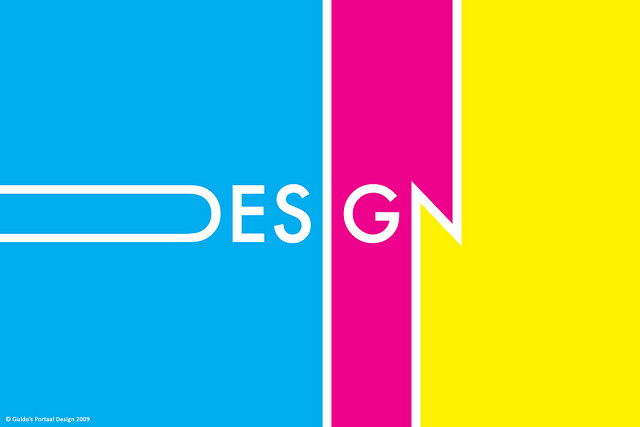
Source: http://www.ip-watch.org/weblog/wp-content/uploads/2015/03/design-image.jpg
pp. 14
Source: http://acephalous.typepad.com/.a/6a00d8341c2df453ef01901d27c5cb970b-500wi
which use images, text, and comics to summarise the work of major philosophers
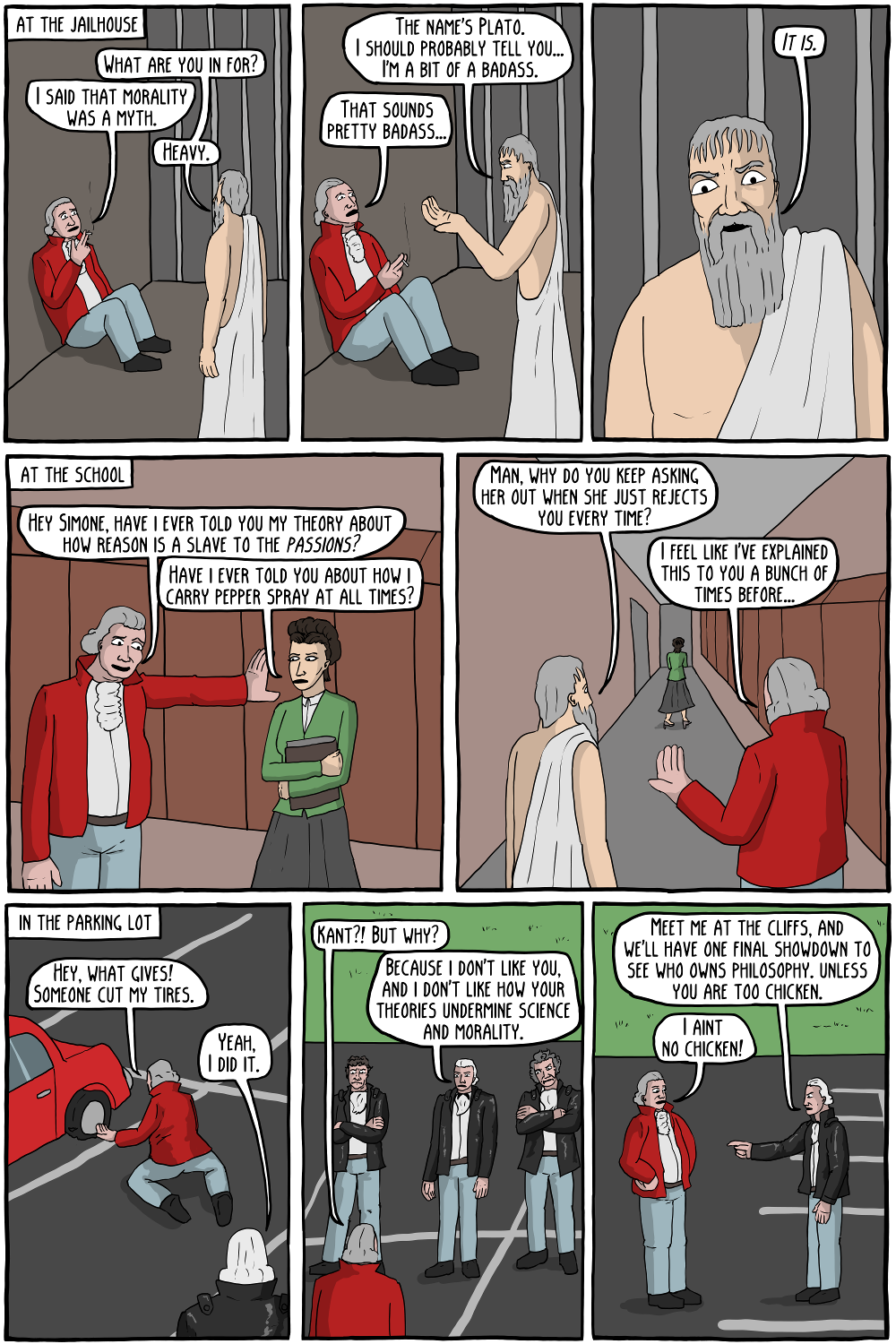
the idea that authorial voice is central to academic writing, and as an example of the challenges and opportunities presented by composing multimodal scholarship which eschews this conception of linguistic authorship.

Source: http://www.spinedu.com/wp-content/uploads/2013/05/boring.jpg
The New Yorker is famous for its satirical drawings, drawing off of world news and conversations.
Academic writing has generally been understood as operating primarily within the linguistic modality, with writing remediating the "voice" of an educator or lecturer.
Academic writing has often been very stiff and usually only involves few mediums (pen, paper, black text on a white background). Not until the last twenty years has academic writing been digital, but what's to say that academic writing has to be boring? Why can't it be multimodal and involve images, videos, audio, etc.?
 what words can't say
(Christmas Truce 1914)
what words can't say
(Christmas Truce 1914)
![]() (p. 12)
(p. 12)
 ne c'est pas une bande dessinée (I don't actually know french so I hope I said that right)
ne c'est pas une bande dessinée (I don't actually know french so I hope I said that right)
 smells procedural
smells procedural
 reminiscent
reminiscent
"For Beginners" and "Introducing" series of "graphic guides," which use images, text, and comics to summarise the work of major philosophers – in this case Derrida and Foucault.
Makes me think of Bogost, perhaps a way to share a complex idea/argument to a larger audience.
how few women appear in this paper
Traditionally women haven't been thought of as part of the general comic audience, much as they were left out of academic discourse. Again a power structure presented through discourse.
earlier forms
Interesting that he starts with comics from the 1970s and continues into the 1990s, before comics were being used in the classroom (as far as I know- it seems like a recent shift to me).
cut down the number of words I had to use dramatically
Images were able to "speak" for him
I wrote the text by hand
Studies show that handwriting activates areas of the brain that typing does not.
multimodal forms as essentially invisible
Relate to Hock's "Transparency"
pushing at the boundaries of what published research can be
Breaking with traditional form by presenting ideas in form of comic
discourse traditionally has taken the form
Interesting point about the globalization of academic writing, the expectations or assumed expectations of how ideas are presented. The academic power structure.
This is a comic that analyses other comics,
Adopting the form that is being critiqued. Literally showing the strengths and weaknesses through his own composition, rather than just writing about them.
challenge the conception of an authoritative author’s "voice," as is typically found in traditional educational and academic writing.
Does it challenge the definition of a writer's authority, or does it question it, causing us to pause and examine how that authority is still present but presented differently?
What Bogost seems to be wanting to do with his procedural games is turn what would normally be highly analytical or requiring a great deal of scholarship, and gamifying it into something not only easily consumable, but potentially fun. Without sacrificing the quality of content of the information he wishes to transmit, he is making the material more accessible not only to a wider audience, but even to the audience the material may already be intended for.
Ian Bogost
o How are digital media transforming the potential audiences for academic discourse?
Bogost’s concept could open the door for widening that audience beyond the academy, considering that his main focus is on the gamification of complex systems through the use of procedural rhetoric which endeavors to destabilize the culture of simplicity.
o Should academic discourse be evolving in response to changes in the rhetorical situation caused by the proliferation of digital and social or participatory media?
In the light of Bennett and Bogost, the proliferation of the social and digital are indicative of the need for a more interrelational understanding—Bogost’s idea is that a more nuanced, complex understanding of issues can be nurtured through operationalizing rhetoric through the use of games, whereas Bennett looks at the nature of human agency as inextricably connected to the agency of objects, from an ontological perspective. Both of these theories point to more structural relationships among concepts, humans, and objects or “hyper-objects.”
o How is our relationship to the environment, the world of things around us affected by rhetoric?
If rhetorics have the power to inform or change a perspective, newer emergent rhetorics can therefore participate in a consciousness-raising event concerning the exigency of circumstances that arise—acceleration, accumulation, climate change, global economic crises, and the rise in human populations, for example.
o Should teaching and learning be evolving in response to changes in the rhetorical situation caused by the proliferation of digital and social or participatory media?
To the end that Bogost argues, teaching and learning should embrace fundamental complexitites and move towards furthering a focus on critical thinking. I think he implies the role of critical thinking when he takes up a postmodern point of view in his refusal to assign meanings or outcomes, as he argues that procedural rhetoric can create the ideal conditions for inquiry while avoiding providing concrete answers to specific problems.
o To what extent are classical models or definitions (Socratic, Aristotelian, Pre-Socratic, etc.) of rhetoric still relevant?
I think that for Bogost, the idea of sophistic rhetoric is still alive—the university as a model for “a rhetorical personal trainer” might be an apropos analogy. The places where these rhetorics hold up is in their ability to be cross-applied; as rhetors in the present, we aim to examine the strengths, limits, and liabilities that certain rhetorics offer. Plato weighed some of the benefits and limits of writing in the Phaedrus, and considering the Aristotelian form, the idea of rhetoric as being aware of the available modes of persuasion, this form still remains as a function that informs the proliferation of rhetoric—understanding rhetoric’s past, coming to terms with the present, and envisioning the next iteration or rhetorical movement.
franchise economics- Coldstone Creamery
Animal Crossing- "long term debt"
procedural mode- addresses processes, claims, or ideas through processes rather than through visual, writing, or orality.
Does writing convince an audience of a message the same way as an oral presentation can?
Aristotle's rhetoric- persuasion towards correct judgments.
Sophists- "personal trainers for rhetoric."
Rhetoric has a bad reputation with lying politicians or other public speakers.
It’s a theory or a design philosophy. It’s a way of making things.
Rhetoric is every choice a writer makes to convey a work's meaning.
, Bogost discusses how most news articles discussing the 2007 merit-based green card proposal in the U.S. Congress cut and pasted examples of how the system would function from press releases. Points of Entry, on the other hand, operationalized the proposed rules, and situated them in a game framework, giving the public a place to experiment with (and develop a deeper understanding of) the way such an approach would work in practice.
The question he raises is about capitalistic society and objects
ogost re-tells two powerful stories about examples of procedural rhetoric: the first about the importance of institutional politics in education (through the Plato game Tenure) and the second about the dynamics of long-term debt (through the Nintendo game Animal Crossing)
He talks about objects and how they can effect people. we can find these concepts in Dr. Wharton's Exposition class and the Atlanta Phoenix Project
Bogost introduces this work with a short overview of the history of rhetoric, including its expansion into areas like written and visual rhetoric.
This concept can be found by comparing our intro to rhetoric class and senior rhetoric classes
Bogost’s procedural rhetoric is a theory about how and why to do operationalization, or other forms of procedural representation, rather than a project to operationalize certain elements of pre-existing rhetorical practice
Maybe academic discourse needs to shift back to the process. We need to get back to the canons and understand how they can translate to digital.
Bogost discusses how most news articles discussing the 2007 merit-based green card proposal in the U.S. Congress cut and pasted examples of how the system would function from press releases.
I find this a little funny because the book I'm reading on PR devotes a lot of time to press releases. When I heard him mention this, I was shocked that news outlets were using PR associates as journalists... Back to the simplicity and instant gratification of our culture.
I am so fascinated with his observations of our society... We have become simple. We look to the internet, and we crave instant gratification, but I had not connected this fast-pace to simplicity. Procedural rhetoric aims to bring the discussion back to the process. During the discussion period, Bogost briefly mentions developing literacy, specifically computational literacy, and he states that we have to "short-circuit" our simplicity. This is such a strong statement, because we have become so used to simplicity and instant reward, but procedural rhetoric and digital literacy forces us to return to the process of rhetoric.
(through the Plato game Tenure)
I like this idea of working through conflicts. We use rhetoric daily to work through conflicts, but we never think of rhetoric as a procedure. We focus on the audience, the appeals, the final product... But we lose the process. This takes me back to the canons. We talk about how the canons are so relevant today, and I think procedural rhetoric proves that. Rhetoric is a process, and delivery is usually the last canon covered. Why? Because rhetoric is a process.
He says that procedural rhetoric is not limited to computers; where else can we apply procedural rhetoric? This idea of procedurality needs to be assessed in our modern classroom, especially since the younger generation is growing up immersed in technology.
The fact that he's putting rhetoric in this procedural context is utterly fascinating. Even in my previous readings on digital rhetoric, I felt drawn to the final product, but I was not considering rhetoric as a procedure through the digital space. It seems like we need to start thinking of rhetoric as a system instead of a product.
a difference in discourse
These were the words Bogost used when stating what he hoped could be achieved in society. It believes that our discourse is too simple and that it doesn't reflect the complexities of life. A more complex discourse would bring authenticity and would expand what we were able to talk about and understand. It would create a discourse of difference.
Tenure
This game sounds awesome. Whoever thought of a game of politics and real scenarios?! Why are education majors not playing this today?
procedural rhetoric
Boost calls "design philosophy"
The ideas and processes behind the design. This could therefore apply to all rhetoric, could it not?
procedural rhetoric
I like the idea of rhetoric of process. In my classes, we talk so much about how rhetoric is a process, but somehow the focus still falls on the final product. This helps to shift that thinking. I know it specifically entails computers, since as Bogost says, "computers are model making machines," but he also says that it can be applied to other media.
Bogost's presentation demonstrates how directly rhetoric can affect our environment and how we interact with it. For instance, in the game he developed for Cold Stone Creamery, Bogost uses procedural rhetoric to show the player the relationship between the viscosity of different ice creams, and the profit margins of the company. After being exposed to this relationship in such a concise and understandable fashion, the player will now interact with the ice creams differently than they had prior to playing the game.
While Bogost does not directly address whether we should evolve academic discourse, I believe his work demonstrates how we can use digital media to frame the conversations we have that involve academic discourse differently. If the things we have academic discourse about are evolving, the ways in which we conduct said discourse ought to evolve in ways that suit the materials and subject.
What an interesting intersection of experience and the digital. By creating a program that is able to stand in for experience to an extent, Bogost attempts to solve one of rhetoric's shortcomings: its disconnect between thought and action.<br> After speaking to a classmate, I wonder whether these systems would be truly useful in any scenario. Perhaps a game about obesity would be less effective than a game about literacy.<br> An additional thing to consider is the power that the programmer, or the rhetor, has in this case. Whoever comes up with such a representational game that seeks to replace experience with with an artificial media has the same power that Plato feared back in the days of the Phaedrus.
Capitalism's
This image can be applied, ideologically, to either Bogost or Bennett—the agency of the individual as mediated or interrupted by objects; the interruption of fundamentally simplistic approaches to complex subjects; the way ideology reproduces itself in capital systems or how subjects are interpellated.
After seeing this screen enough times, one begins to understand that this game is not about luck, or brute force, or the techniques with which games are traditionally played. This game is about understanding games, it is about understanding mechanics, and it is about understanding systems. Each enemy is a system that must be learned in order to defeat it. Without mastering each system, progress will never be achieved. In a sense, Bloodborne teaches the player about games themselves.
After seeing this screen enough times, one begins to understand that this game is not about luck, or brute force, or the techniques with which games are traditionally played. This game is about understanding games, it is about understanding mechanics, and it is about understanding systems. Each enemy is a system that must be learned in order to defeat it. Without mastering each system, progress will never be achieved. In a sense, Bloodborne teaches the player about games themselves.
Procedural Rhetoric
Using games to enhance learning through interaction for better understanding of complex information and ideas
We become so focused on the end product, but this graphic illustrates the multiple steps that must be taken to get there. It is a procedure.
1:05, to bring up vitalism again (but not really) What if the desire for animism comes not from a desire for "oneness" in thoughts, not in a physical state of being. This acknowledges some psychic link.
55:30,
FINALLY A GOOD QUESTION

37:50~
Is there a reason that we ignore/tune out the call of things? Do things allow us to betray other humans? Perhaps ignoring the call is simply an evolved power.
This makes me think of the film Her. Looking at the relationship between man and phone/computer applies the call of things.
27:52, Is the cocoon a pupal stage or a protective layer? Should we refer to the hoard as a cocoon or an exoskeleton?
Consider how wearables enable data hoarding.
22:40, 
21:45 How is the hoard not a reflection of the desires of others? I fail to see the intrinsic power in the object, although I think this theory requires a level of suspension.
11:05, "just crazy" The caption she chooses for the video is interesting because although the man says it about the television, it reminded me of Frankenstein (the argument for inorganic sympathy can be made for Frankenstein, though I think Frankenstein is more directly related to vitalism).
8:10 Her definition of rhetoric as "word-sounds" is interesting, because she relates rhetoric as a power used to understand objects.
3:30, grateful for that powerpoint--I thought she was saying horde, not hoard. 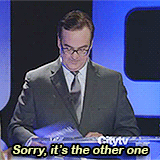
3:30, grateful for that powerpoint--I thought she was saying horde, not hoard.
Arranging our rhetoric around human subjects and not around things brings humans to the forefront and things to the background. This arrangement allows for a lack of intentionality in how we treat our things.
The fact that this lecture appears on You Tube is a testament and an example of how digital media is changing rhetorical situations. Whereas in a pre-You Tube era, Bennett would have spoken one speech to one room of people with the possibility for an audible share devoid of physical evidence (I am thinking of a tape recorder here), now she speaks to a much wider audience with all of her visual aids in tact.
Fixed social structures produce an impoverished form of agency because agency always belongs to the same components or groups.
In the case of "fixed social structures" I can't help but make the connection to the idea of Marxist theory—the ideological state apparatus; the idea of agency and interpellation is complicated and perhaps disrupted by this consideration of agency as "multi-determinate and inclusive."
Assemblage theory does not treat agency as something that belongs to or stems solely from humans or from technology alone but from the interaction of a number of heterogeneous tendencies that together produce emergent properties that enable new capacities. In addition, every assemblage contains actants, like Go, that can modify other entities giving them new functions and abilities. Without new associations or without continually forming new connections this process cannot take place and agency cannot occur.
This seems to point to the idea of agency itself as being emergent given the fact that "assemblages contain actants."
The examples of Foxtel Go and the LetsPlay channels demonstrate how new television can be thought of as an assemblage of heterogeneous elements that has moments of stability and moments of transformation depending on the kinds of connections that are formed. They also demonstrate how the social is refigured through the new productions and viewing practices they engender.
One of the interesting things about the social is the idea of impermanence or its quality of being subject to change—television is but one analogy of how seemingly stable concepts can be changed, disrupted, broken down, or reconfigured, given a change in the constraints that mediate those concepts.
For them, the transmission of television via a simultaneous schedule is an entirely foreign concept, even though this has been one of the defining elements of television as a medium for decades
This difference in viewpoint that children experience—"emergent viewing practices—is very interesting in the light of the way television has been experienced across its history.
Latour argues that it is through the process of reshuffling agency that associations between objects are revealed as social. He argues that the social ‘is an association between entities which are in no way recognizable as being social in the ordinary manner, except during the brief moment when they are reshuffled together’ (Latour, 2005: 65).
It's interesting how Latour uses the idea of "social" outside its normal context to talk about relationships between "entities." That word keeps the door open to consider the agency of non-human objects and the interrelational connections among them.
Reciprocal determination is a non-linear form of determination that emerges from a process of interaction.
Interaction then encourages non-linearity.
Finally, the concept of assemblages shows promise in theorising multiplatform television as an arrangement that challenges a linear determination based on a cause and effect logic, in favour of a multi-determinate trajectory.
Finally, a non-linear approach to rhetoric, an art that is often misconstrued as being married to the the linear.
Keilbach and Stauff have a similar issue with the framing of television as a stable medium. They argue that recent discussions about the dramatic changes in television that ‘distinguish the medium’s current heterogeneity from television as it used to be’; [imply] that television once had a stable identity that is now being called into question
This is the same assumption that we make with the internet, that it has a past that has been stable, but this is not the case. The very nature, as they say later, of televisions that of change.
In the US context, Amanda Lotz argues that the shift to the digital multiplatform has altered television’s industrial logic and therefore requires ‘a fundamental reassessment’ of how television ‘operates as a cultural institution’
This is the same argument that is taking place over rhetoric in the face of digital media.
engage with a show’s interactive material or create and distribute user generated content.
Engaging in what we see brings an experiential aspect to television that we lacked before.
Reciprocal determination is a non-linear form of determination that emerges from a process of interaction. To appreciate the importance of this concept to the functioning of assemblages, it is necessary to understand how it relates to both the virtual and the actual. Assemblages function on two planes: the plane of consistency or virtuality, which is made up of becomings or pure differentiation; and, a plane of organisation that actualises these virualities by segmenting and stratifying them
Defining reciprocal determination
Processes of deterritorialisation, on the other hand, undo fixed orderings, disrupt hierarchical power structures, and by privileging contingent relations between heterogeneous parts, open the assemblage to new possibilities (Deleuze and Guattari, 1987: 3–25)
In terms of destabilization and withdrawing privilege from hierarchical structures, deterritoialisation could be seen as valuable for feminist critique as a way or process of challenging binaristic qualities and dominant/patriarchal power structures.
Actants are entities that contribute something new to the assemblage and can be human or non-human.
This concept would support the kind of "relational" ontology that Nancy Tuana offers in her considerations of the Anthropocene and the concept of viscous porosity.
Complicating matters is the fact that different theorists use different terminology to describe what might appear to be similar phenomena.
This is an important quality to consider when comparing theories. The absence of standardized terms and analogies leads to nomenclature which can often be confusing.
The implication of this is that social theory misses transformations in culture and the social itself.
As culture is fluidly experienced and is indeed changing, this seems like an important point to note.
in favour of a multi-determinate trajectory
How will multi-determinate trajectory be dealt with?
deterritorialised and reterritorialised,
These terms are an application of Deleuze. The terms are described here on the Deleuze wiki:
‘takes seriously the particular objects, technologies, and forms through which culture is brought together’
If this assemblage theory is inclusive, does it also consider the interrelational quality of of the connections among technology, objects, forms and agents?
television once had a stable identity that is now being called into question
The concept of identity as a stable concept or entity, in general, is interesting towards feminist considerations of how gender and sexuality can be described using the concept of "fluidity." How can this notion be cross-applied to the issue of ever-changing technological media?
theorists suggest that there is a need to develop new theoretical frameworks that encompass more than the analogue broadcast model.
Therefore, we are to assume a discussion of interactivity and reciprocal determination; I am curious as to how newer theories might deal with the idea of consumer/commodity or consumer as commodity.
emerged
Data is being modulated in different kinds of display states: smartphones, computers, t.v.'s, and through different protocols which offer that modulation: Netflix, Hulu, etc.
the way television culture can be deterritorialised and reterritorialised through new connections and in doing so introduce new qualities such as interactivity and reciprocal determination.
This is pointing to the focus of the argument or thesis idea.
Within assemblage theory, agency is dependent on the kinds of relationships that are formed between different elements.
I like the idea of agency related to relationships. People act differently in different roles, and roles change with time.
In a multiplatform environment participation and agency can happen in more subtle ubiquitous ways; it happens through practices like using the Foxtel Go that transforms computers, tablets and phones into television sets.
Agency is usually thought of as something obvious and unmistakable, so rarely do people using netflix think of themselves as agents.
it is also becoming increasingly multiplatform by spreading its content across different devices and platforms that encourage viewer participation.
Yes! Apps like WatchABC and what not. It's interesting because some people use these apps as backup when they miss the original air time of a show, but because they missed it, they have to interact with the provider.
For example, a viewer who personalises their news to receive only business news or entertainment news misses out on hard news and is not exposed to a mixed diet of news sub-genres
Or conservative vs. liberal news, etc.
Furthermore, Bennett and Strange point out that customisation and personalisation technologies that enable viewers to select programmes according to personal taste
It's human nature to go to what is similar to us and our views. So I can see how this would be a problem.
As a stable structure, broadcast television may not offer the personalisation and customisation features that digital television does, however it possesses some very important functions. By addressing a mass audience, it facilitates a sense of nationhood and enables the spread of important information
I agree with Karisa. This seems like a stretch, like she was going for something purely emotional and went straight to nationhood. Important info can easily be spread through other outlets, I mean heck, I get most of my news from Twitter. Maybe people are afraid of this decentralization of television.
viewers to become schedulers
viewers as schedulers... interesting concept, but also totally understandable, i.e. Netflix
With their simple content and amateur production standards, LetsPlay channels have very rudimentary aesthetics that challenge the broadcast/network model.
But could they be "amateur" to appeal to children? Just a thought.
Even the name given to these channels ‘LetsPlay’
Deliberate choice!
Their hybrid nature puts into question television’s ontological status and the idea that it is a stable medium. While I agree with Uricchio who argues that historically television demonstrates a propensity for change and that different models of television have always existed, I would also suggest that examples like LetsPlay channels signal that digital technology has considerably increased the number of different forms of television and the rate of change.
I agree with this argument, but I can't help but think back to Clemens and Nash. Examples like LetsPlay also blue the lines between media, bringing us back to their idea of a digital ontology and a single medium.